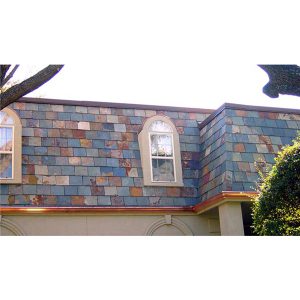Introduction:
Cultured stone, also known as manufactured stone or artificial stone, has become a popular alternative to natural stone in construction and design. With its versatility, affordability, and aesthetic appeal, cultured stone offers numerous advantages for a wide range of applications. One key consideration when choosing any building material is its durability. In this article, we will delve into the durability of cultured stone, examining the factors that contribute to its longevity and resilience in various environments.
Understanding Cultured Stone:
Cultured stone is a man-made product designed to mimic the look and feel of natural stone. It is typically made from a blend of cement, aggregates, and iron oxides for coloration. The manufacturing process involves casting the mixture into molds that replicate the texture and shape of different types of natural stone, such as limestone, slate, or granite. Once the cultured stone is cured and hardened, it is often hand-painted to enhance its resemblance to natural stone.

Durability Factors:
Several factors contribute to the durability of cultured stone, making it a reliable choice for both interior and exterior applications. These factors include:
1. Strength and Structural Integrity: Cultured stone is engineered to be strong and durable, capable of withstanding various weather conditions and structural stresses. The blend of cement and aggregates provides solid structural integrity, ensuring that the stone maintains its shape and form over time.
2. Moisture Resistance: Cultured stone is designed to be resistant to moisture, which is essential for outdoor applications where exposure to rain, snow, and humidity is common. The manufacturing process often includes additives that enhance the stone's water resistance, preventing moisture from seeping into the material and causing damage.
3. Freeze-Thaw Resistance: In regions where temperatures fluctuate significantly, freeze-thaw cycles can pose a threat to building materials. Cultured stone is formulated to withstand freeze-thaw conditions without cracking or deteriorating, making it a durable option for outdoor installations in cold climates.
4. UV Resistance: Exposure to ultraviolet (UV) rays from sunlight can cause discoloration and fading in some building materials. Cultured stone is typically treated with UV-resistant coatings or pigments to protect it from sun damage, ensuring that its color and appearance remain vibrant over time.
5. Stain Resistance: Cultured stone is often sealed with protective coatings or sealants that make it resistant to stains from dirt, oil, and other contaminants. This stain resistance not only preserves the stone's aesthetic appeal but also simplifies maintenance and cleaning.
6. Impact Resistance: Cultured stone is designed to be impact-resistant, reducing the risk of chipping or cracking from accidental impacts or collisions. This durability factor is particularly important for exterior applications where the stone may be exposed to physical wear and tear.
7. Fire Resistance: Cultured stone is inherently fire-resistant, offering a high level of protection against flames and heat exposure. This fire resistance is a crucial safety feature for both interior and exterior applications, providing peace of mind in case of fire emergencies.
Applications and Installation:
Cultured stone is a versatile material that can be used in a wide range of applications, including:
- Exterior cladding and siding: Cultured stone is commonly used to enhance the exterior of buildings, providing a natural stone look without the high cost or maintenance requirements of natural stone.
- Interior accent walls: Cultured stone can add texture and visual interest to interior spaces, creating focal points such as fireplace surrounds, feature walls, or kitchen backsplashes.
- Landscaping and hardscaping: Cultured stone is a popular choice for creating decorative elements in outdoor spaces, such as retaining walls, garden borders, and water features.
Proper installation is key to ensuring the durability of cultured stone. It is essential to follow manufacturer guidelines and best practices for installation, including proper substrate preparation, adhesive application, and sealing. Stepping stone walkways for inviting entrances by experienced contractors is recommended to achieve optimal results and long-term performance.
Maintenance and Care:
While cultured stone is known for its durability, regular maintenance is still necessary to preserve its appearance and performance over time. Here are some maintenance tips to help prolong the life of cultured stone:
- Regular cleaning: Clean cultured stone surfaces periodically to remove dirt, dust, and grime. Use a mild detergent and water solution, along with a soft brush or cloth, to gently scrub the stone without causing damage.
- Sealing: Consider resealing cultured stone every few years to maintain its water resistance and protect it from stains. Consult with the manufacturer or a professional contractor for recommended sealants and application methods.
- Inspections: Conduct regular inspections of cultured stone installations to check for signs of wear, damage, or deterioration. Address any issues promptly to prevent further damage and ensure the longevity of the stone.
- Repairs: In case of minor damage, such as chips or cracks, consider repairing the cultured stone using appropriate patching materials and techniques. For extensive damage, consult with a professional contractor for repair options.
Conclusion:
Cultured stone offers a durable and aesthetically pleasing alternative to natural stone for various construction and design projects. Its strength, moisture resistance, freeze-thaw resistance, UV resistance, stain resistance, impact resistance, and fire resistance make it a reliable choice for both interior and exterior applications. By understanding the factors that contribute to the durability of cultured stone and following proper installation and maintenance practices, builders and homeowners can enjoy the enduring beauty and performance of this versatile building material for years to come.
